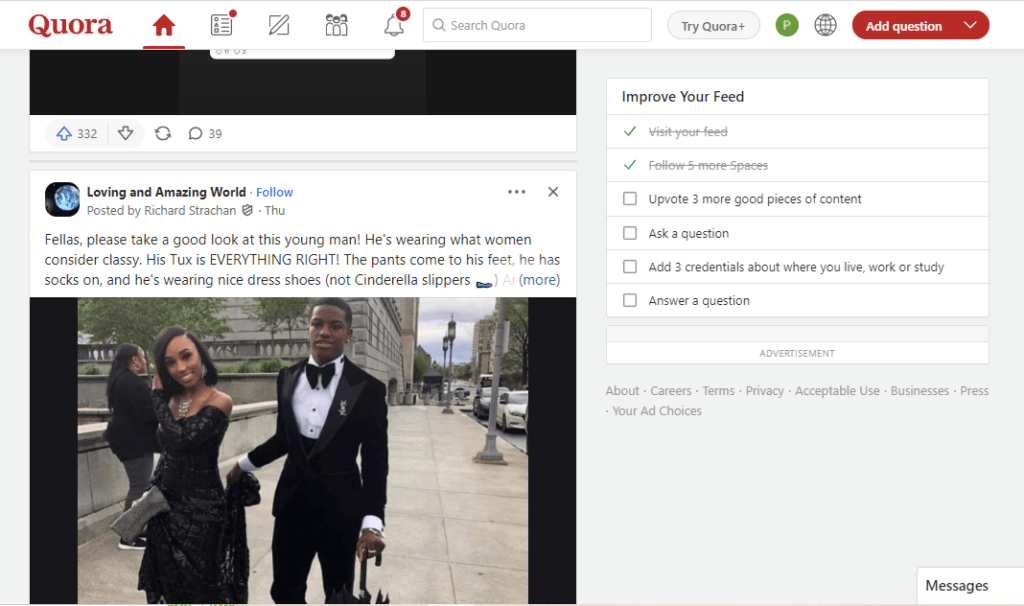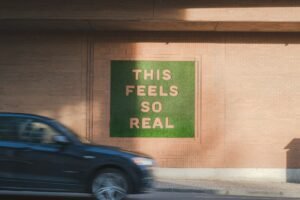With over 1.25 billion websites scattered all over the internet like stars in the galaxy, selecting the best website design and website type is important for your brand.
Although all businesses need to have a website, not all websites are the same. Each website type has its unique features and uses, all of which we want to help you identify, so that you can get the best website design and type that fits your brand.
But before we start discussing the different website types, it is important to understand the following before building a website for your brand;
- What is the purpose of the website?
- What do you want the website to accomplish? Do you want visitors to be able to make purchases directly from the site, do you want it to showcase your company’s portfolio of work, etc?
- How much traffic does this site need to generate?
- Do you have any other goals in mind?
Take note of these questions while we look at the different website types and figure out which type is best for your brand and your business.
The Different Website Types
There are different website types and designs each with its unique functionality, usability, and purpose. The most common website types are;
- Blogs
- Business/corporate websites
- E-commerce websites
- NGO/Non-profit websites
- Educational websites
- Portfolio websites
- Landing pages
- Entertainment websites
- Social media websites
- Web portals
- Forums
1. Blogs
This type of website is primarily used as a means of communication to share information with the public. They are often used by individuals and organizations that want to publish their thoughts on various topics, but they can also be used for sharing opinions about specific events or news stories.
Common features seen in blog websites include;
- An archive page where all previous posts are stored
- A contact page for inquiries, feedback, and suggestions from readers
- Categories and tags for ease of browsing.
- A section to allow people to subscribe to different types of content
- A comment section for blog readers to share their thoughts. This is usually an optional feature for most blogs.
The most common platform for building a blog is a CMS (Content Management System), such as WordPress, Joomla, Drupal, and Magento. WordPress has become a popular option for bloggers and brands alike—large, small, new, and established.
Qilo – a website we built for one of our clients is a great example of a blog website. Qilo is a weight management solution that shares different weight care tips and solutions for its target audience via its website.

2. Business/Corporate websites
Business and corporate websites are designed for companies that want to showcase their products and services. These websites are typically more professional and corporate in their design, tone of voice, and content than blogs, this is because they are built to reach a specific audience and communicate a clear message about the company’s offerings.
They can also be used to post news and blog posts, share information about the company or brand, provide contact information for sales or customer service departments, etc.
Components of business/corporate website include;
- A menu bar for easy navigation of your website.
- An About Us page that describes the company, its history, and its mission statement
- A Products and Services page that showcases your offerings and how they meet customer needs
- Images of products, services, or people using them
- Contact information for sales, customer support, or other departments
- Call-to-actions to help the site visitors take certain actions.
WordPress, Wix, PageCloud, or Squarespace are common builders for business/corporate websites. However, for a highly customized professional site, you can work with a professional website development company to achieve your goals.
A good example of a business/corporate website is our company’s website Effe Towers.
3. E-Commerce Websites
E-commerce websites are websites that allow customers to purchase products online. This website type is the best website design option if your sell any type of product.
These types of websites are often referred to as “stores” because they have all the functionality of a brick-and-mortar store – They allow customers to browse through products, view product details and descriptions, add items to their shopping cart, check out and pay for purchases using credit cards or payment gateway accounts.
An e-commerce website can be a standalone or part of another website, such as a corporate/business website.
The standard features of an e-commerce website include;
- A product catalog with images and descriptions of products.
- A shopping cart that allows customers to add products and view their cart at all times.
- A search function so customers can find specific products or brands easily.
- A section for customers to signup and set accounts.
- Secure payment gateways for credit card payments (PayPal, Stripe, Flutterwave, etc.).
Some of the best e-commerce websites are built using Shopify, WooCommerce, Weebly, Square, and BigCommerce—which allows you to incorporate all the essential shopping features (inventory display, a shopping cart, and payment gateway) into your website.
A good example of an e-commerce website is Amazon.com.
4. NGO/Non-Profit Websites
The purpose of an NGO/Non-Profit website is to raise awareness, promote a cause or spread information. NGOs use their websites to communicate with supporters, volunteers, and donors. They will often include information about the organization’s mission statement and its charitable activities as well as profiles of some of its key members or board members.
These websites are usually designed using similar layouts as corporate websites but have content that focuses on people rather than products or services. A clear call to action is also included so that visitors can easily find out more about how they can get involved in helping out with these projects by donating money or volunteering at events being held locally near them.
This type of website can be built using builders like WordPress, Wix, or developed from scratch depending on your needs, to meet your specifications.
An example of an NGO/non-profit website is the RedRose website, an organization creating transparency in the process of administration of humanitarian aid in crisis-ridden areas.

5. Educational Websites
An educational website is a type of website that focuses on teaching people about a particular subject, a new skill, or improving upon an existing one. This could be anything from basic math to advanced physics, and everything in between.
The format of these websites is usually different from other types of websites and contains more videos and other forms of media. Common features of an educational website include;
- Learning materials that are organized by topic or skill level
- An interactive and intuitive design/interface
- A large amount of video content
- An FAQ page to answer common questions
While educational websites can be built with WordPress and Wix, many are usually developed from the ground up by professional website developers.
A good example of an educational website is Khan Academy, which was founded in 2009 by Indian-American educator Salman Khan to provide free online education for students around the world.
6. Portfolio Websites
Portfolio websites are designed to showcase your work. They can be used as a portfolio, resume, or CV. These sites can also help you market yourself and your work to potential clients and employers by providing them with a convenient place to view your work in its entirety.
If you’re a designer, developer, or photographer, then a portfolio website is the best website design to showcase your work and build your brand. They are also useful for freelancers looking to find new clients.
Components of a portfolio website include;
- A brief bio that includes your name and contact information
- A list of your skills, experience, and educational background
- Portfolio items that showcase your work
- Testimonial from past clients.
To create a standout portfolio, you need a website builder like Squarespace, PageCloud, Wix, WordPress, and Portfoliobox.
A good example of a portfolio website is Christina Vanessa, a graphic designer, and visual communicator.
7. Landing Page
Landing pages are a great way to drive conversions. They can be used in conjunction with an existing website, or as a standalone resource to help you capture leads and grow your audience. A landing page is essentially a single-page website that promotes one specific product or service. These often take the form of lead generation forms, but they can also include other call-to-action elements such as testimonials and case studies.
Components of a landing page include;
- A clear headline that communicates your value proposition and the benefits of your product or service
- A compelling copy that provides specific details on how it can help solve a problem for customers
- Visuals, such as images and videos, to help illustrate the value you offer
- A clear call-to-action for the website visitors to take.
Wix and WordPress are excellent builders for landing pages.

This free website copywriting guide by Effe Towers is a simple example of a landing page.
8. Entertainment Websites
Entertainment websites are websites that are designed to entertain visitors. They can be funny, entertaining, or educational. Entertainment websites can also serve as a platform for user-generated content (UGC), where users contribute their photos and videos.
The components of the best website designs of a typical entertainment website include;
- A homepage that features a slideshow of the latest content.
- A menu bar at the top of the page with links to different sections of the website.
- An area for user-generated content, where users can upload their photos, videos, and other media.
- A search bar at the top of the page for users to find content by keyword.
Platforms like WordPress, and Dreamweaver, are excellent builders for this type of website.
Popular examples of entertainment websites include YouTube, Netflix, Reddit, etc. News destinations like CNN also fall into this classification.
9. Social Media Websites
Social media websites are a type of website that is used primarily for sharing content and connecting people with similar interests. This type of website allows users to create profiles and connect with other users, who may not necessarily be in their immediate area.
Social media websites often feature newsfeeds or streams that display updates from all the users connected to the site, as well as posts and comments made by those users. Popular examples of social media websites include Facebook, Twitter, Pinterest, etc.
This type of website can be built using WordPress, Wix, and other different website builders.
10. Web Portals
Web portals are websites that serve as a gateway to other online content. This type of website functions like an online guide, allowing users to search for specific information and websites on the internet.
Web Portals can be used for internal purposes at a business, association, or organization. They gather data from various sources and configure it in one spot so that all the crucial information is available to those who need to see it. They frequently include a login and customized views for various users that guarantee the open data is generally helpful to their specific needs.
Google acts as a web portal by providing access to information on virtually any subject that exists online.
Web portals can be efficiently created using either Joomla or Drupal because both CMSes have the plugins required to develop portal-style websites.
11. Forums
Forums are online discussion boards, usually created by a company or organization. They provide an opportunity for users to ask questions and receive answers from others in the same boat as them. Forums are a great way to get feedback on products and services, as well as stay connected with customers and fans of your brand or product.
Another great benefit of using forums is networking with other people in similar industries.
Common features of a forum website include;
- A search function to find topics that interest you
- Posting and replying to messages
- User profiles with user reputation scores
- Rating system for posts.
- Private messaging features.
Wix Forum and WordPress make it simple to create a forum that can be incorporated into your website.

Quora is a great example of a forum website.
In Conclusion
When you’re starting, it can be hard to know what type of website is best for your brand. Choosing the best type of website is a matter of determining what your goals are, and then finding the right design to meet those goals.
The right website design plays a vital role in the success of any online business because it helps visitors find exactly what they’re looking for on your site. The best website design for your brand will communicate the core values of your business, so customers feel confident in doing business with you instead of another company offering similar products or services (or even competing directly).
If you’re still unsure about which type of website is best for your brand, reach out to our team of professional website designers who can help guide you through the process. They will be able to provide tips and suggestions based on what they have seen work effectively in the past. The most important thing is that you find something that fits your needs and goals while staying within a reasonable budget so that it doesn’t overwhelm either area!



